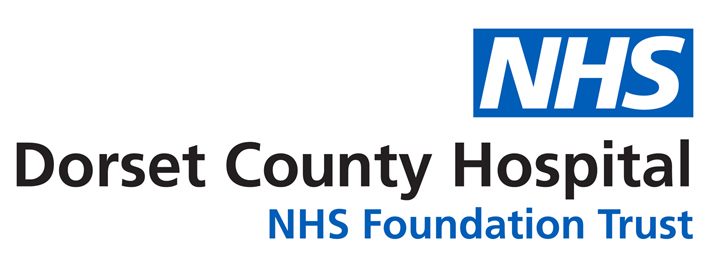Linezolid
What is linezolid and what are the benefits of taking it?
Linezolid is an antibiotic that is used to treat infections such as Staphylococcal and similar bacteria. The main benefit of being prescribed this treatment is that it can be given to you as a tablet or liquid. This means that you may not need to have an intravenous drip to receive your antibiotic, and you may be able to have part of your treatment at home.
How do I take linezolid and how long will I need to take it for?
You should take it twice a day every 12 hours, for example at 8am and 8pm. You can take it before, with or after food. Your doctor or clinician will determine the length of the treatment course. You should continue taking linezolid until you have finished your prescribed course. Do not stop taking this medicine when you start to feel better. If you discontinue it too soon, surviving bacteria may cause a relapse.
Are there any food restrictions with linezolid?
Some foods that contain tyramine can increase your blood pressure when you are taking this medicine. Avoid the following types of foods:
- mature or aged cheese
- aged, smoked, pickled, or cured meats/fish/poultry such as salami, liver, pickled herring
- beer (draft), wine (no more than one medium 175m) glass per day), bottled/canned beer, including non-alcoholic (no more than 568ml/1 pint per
day). Minimise alcoholic spirit intake - chocolate (one 50g serving is considered safe)
- avocados or any over ripe fruit.
- yeast extracts including Bovril, Oxo or Marmite and soups, gravies, casseroles with meat extracts
- soy products, including soy sauce, teriyaki, tofu
- broad beans, sauerkraut
- sourdough bread
- protein diet supplements.
Other medications (drug interactions)
Your doctor or clinician will review your other medications before starting treatment. Linezolid should not be used if you are taking or have taken within the last two weeks any medicines known asmonoamine oxidase inhibitors (MAOIs, for example phenelzine, isocarboxazid, selegiline, rasagiline, moclobemide). These may be used to treat depression or Parkinson’s.
Other commonly used medicines, such as antidepressants and certain painkillers (for example, codeine, tramadol, fentanyl and methadone), can also increase your serotonin levels.
If you are taking pharmacy only/over the counter, or herbal remedies you must check that it is safe to take with linezolid. You should avoid taking:
- St John’s Wort (a herbal remedy used for depression)
- recreational drugs (for example, MDMA (‘ecstasy’), cocaine or amphetamines).
Is there any monitoring I need during treatment?
If you are prescribed linezolid for more than a week you will be asked to return to the hospital for a review and a weekly blood test (a full blood count). If you are taking linezolid for more than a week and you are not having blood tests, please ask your GP.
Your eyesight should be monitored if you take linezolid for more than 28 days. If you are taking linezolid for more than 28 days and have not had a vision check, please ask your hospital team.
What side-effects might I experience?
All medicines have side effects. Linezolid can cause:
- reduced blood count (anaemia), which may cause bleeding and bruising
- sore mouth/mouth ulcers
- nausea/diarrhoea
- skin rashes
- difficulty in sleeping (insomnia)
- headaches
- dizziness
- changes in vision such as blurred vision, changes to sharpness or colour, if affected do not drive or operate any machinery or electrical tools
- serotonin syndrome (see below)
- clostridium difficile, pseudomembranous colitis.
What is serotonin syndrome?
Serotonin syndrome is a rare, but potentially serious, set of side effects that can occur when the levels of serotonin in your body become too high.
What are the symptoms of serotonin syndrome?
Symptoms of serotonin syndrome can be mild, such as:
- diarrhoea
- restlessness.
Other symptoms can be more severe, such as:
- excessive sweating
- tremor (including fine shaking of the hands)
- shivering
- involuntary muscle twitches or jerking
- confusion and mood changes
- raised blood pressure and faster pulse (heart rate)
- increased body temperature
- seizures or convulsions (fits).
Contact your GP or the pharmacy hospital team on 01305 255294 for advice if you experience mild unexplained symptoms for more than two days.
Go to your nearest Emergency Department immediately if you experience any of the more severe symptoms.
Take this leaflet with you and make sure the doctor treating you is aware of any medicines that you are currently taking, including linezolid. We advise your close relatives and friends to also read this factsheet so that they can help you identify symptoms and get you medical help if needed.
What should I do if I think I might have an adverse reaction to linezolid?
If you develop a severe headache, notice any unexplained bruising and bleeding, problems with your sight, tingling in your hands or feet, shortness of breath, severe skin rash, signs of infection or serotonin syndrome, please go to your nearest Emergency Department.
Useful contacts
We hope that you have found this information useful. If you have any further questions or concerns, please contact the hospital pharmacy team on 01305 255294.
About this leaflet
Author: Christine Dodd, Deputy Chief Pharmacist and Medicines Safety Officer
Written: October 2024
Approved: February 2025
Review date: February 2028
Edition: 1
If you have feedback regarding the accuracy of the information contained in this leaflet, or if you would like a list of references used to develop this leaflet, please email patientinformation.leaflets@dchft.nhs.uk
Print leaflet